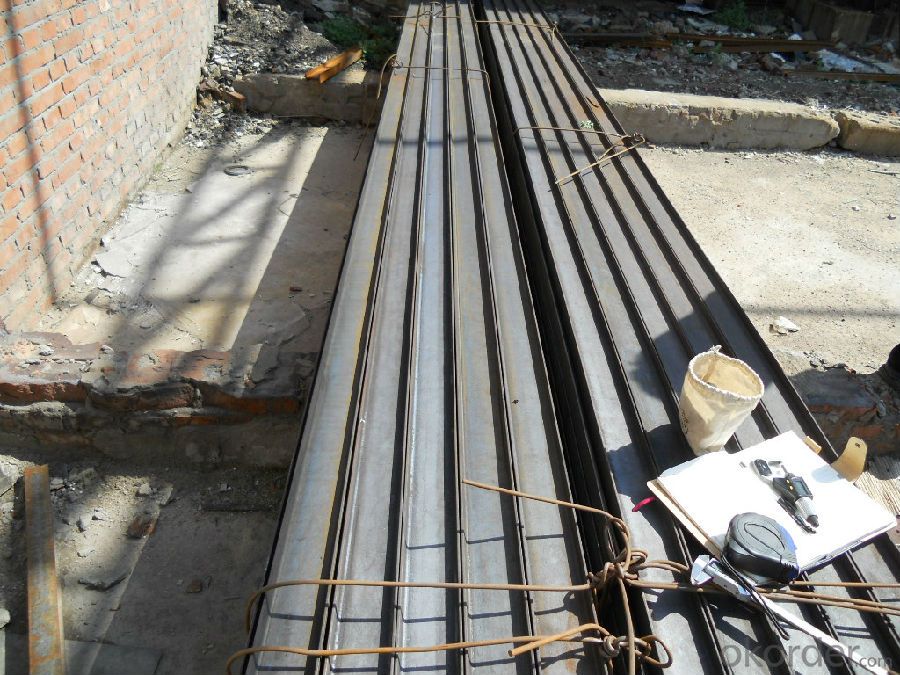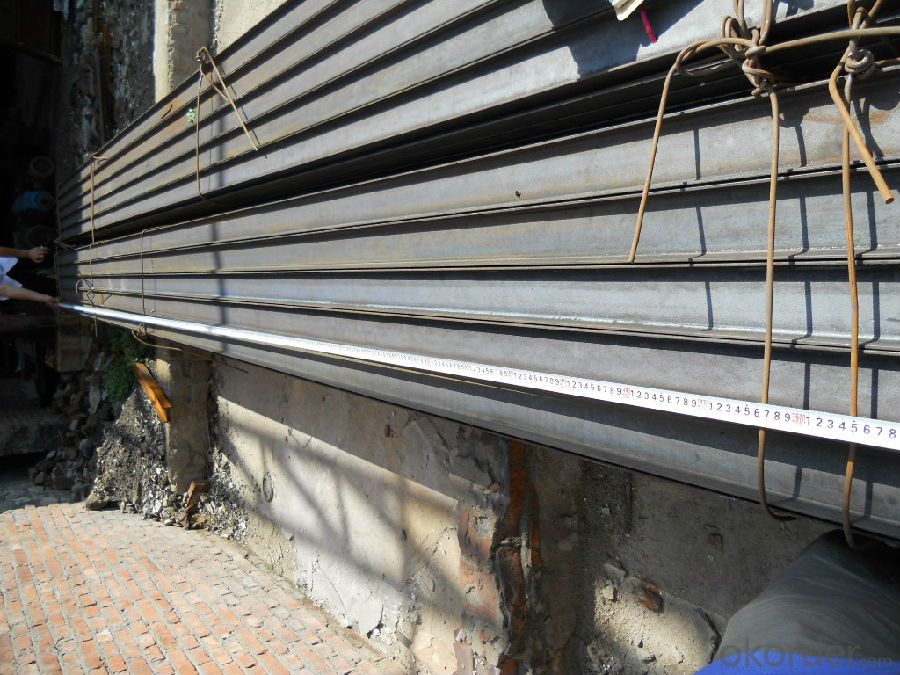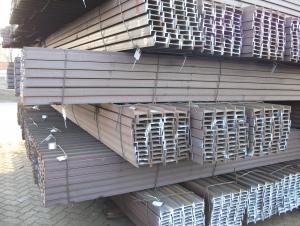Hot Rolled IPEAA Beam High Quality EN Quality
- Loading Port:
- China Main Port
- Payment Terms:
- TT or LC
- Min Order Qty:
- -
- Supply Capability:
- -
OKorder Service Pledge
OKorder Financial Service
You Might Also Like
Product Applications:
1. structure construction and electronic tower building construction
2. bridge, trestle, autos, brackets, machinery
3.It is widely used in various building structures and engineering structures such as roof beams, bridges, transmission towers, hoisting machinery and transport machinery, ships, industrial furnaces, reaction tower, container frame and warehouse etc.
.
Product Advantages:
OKorder's IPEAA Beam are durable, strong, and resist corrosion.
Main Product Features:
· Premium quality
· Prompt delivery & seaworthy packing (30 days after receiving deposit)
· Corrosion resistance
· Can be recycled and reused
· Mill test certification
· Professional Service
· Competitive pricing
Product Specifications:
1.Standard: EN10025, GB Standard, ASTM
2.Grade: Q235B, Q345B, SS400, ASTM A36, S235JR, S275JR
Alloy No. | Grade | C | Mn | S | P | Si |
Q235 | B | 0.12%-0.20% | 0.3%-0.7% | <=0.045% | <=0.045% | <=0.3% |
3.Length: 5.8M, 6M, 9M, 12M or as the requriements of the customers
4.Sizes: 80mm-200mm
Dimensions | |||||
h | b | s | t | Mass Kg/m | |
IPEAA80 | 80 | 46 | 3.20 | 4.20 | 4.95 |
IPEAA100 | 100 | 55 | 3.60 | 4.50 | 6.72 |
IPEAA120 | 120 | 64 | 3.80 | 4.80 | 8.36 |
IPEAA140 | 140 | 73 | 3.80 | 5.20 | 10.05 |
IPEAA160 | 160 | 82 | 4.00 | 5.60 | 12.31 |
IPEAA180 | 180 | 91 | 4.30 | 6.50 | 15.40 |
IPEAA200 | 200 | 100 | 4.50 | 6.70 | 17.95 |
Package & Delivery Terms of IPEAA Beam
1. Packing: it is nude packed in bundles by steel wire rod
2. Bundle weight: not more than 3.5MT for bulk vessel; less than 3 MT for container load
3. Marks:
Color marking: There will be color marking on both end of the bundle for the cargo delivered by bulk vessel. That makes it easily to distinguish at the destination port.
Tag mark: there will be tag mark tied up on the bundles. The information usually including supplier logo and name, product name, made in China, shipping marks and other information request by the customer.
FAQ:
Q1: Why buy Materials & Equipment from OKorder.com?
A1: All products offered byOKorder.com are carefully selected from China's most reliable manufacturing enterprises. Through its ISO certifications, OKorder.com adheres to the highest standards and a commitment to supply chain safety and customer satisfaction.
Q2: How do we guarantee the quality of our products?
A2: We have established an advanced quality management system which conducts strict quality tests at every step, from raw materials to the final product. At the same time, we provide extensive follow-up service assurances as required.
Q3: Can stainless steel rust?
A3: Stainless does not "rust" as you think of regular steel rusting with a red oxide on the surface that flakes off. If you see red rust it is probably due to some iron particles that have contaminated the surface of the stainless steel and it is these iron particles that are rusting. Look at the source of the rusting and see if you can remove it from the surface.
Images:


- Q:Can steel angles be used for decorative purposes?
- Certainly, decorative purposes can indeed be served by steel angles. Due to their versatility, steel angles can be molded and manipulated into diverse designs and patterns, thus making them highly sought-after for augmenting the aesthetic appeal of both indoor and outdoor areas. These angles are ideal for fashioning decorative embellishments like trims, frames, and brackets. Furthermore, steel angles can be effortlessly painted or coated with powder in a wide array of hues, enabling seamless integration with any desired visual style. The robustness and durability of steel angles also guarantee their ability to withstand the test of time, rendering them a pragmatic and captivating choice for decorative applications.
- Q:What are the different types of steel angles used in machinery?
- Machinery commonly utilizes various types of steel angles. Equal-leg angles, also known as L-shaped or L-angle steel, are one of the most frequently employed varieties. These angles have identical dimensions on both sides and form a 90-degree angle. Their purpose in machinery is to provide structural support, stability, and reinforcement for joints and connections. Unequal-leg angles, on the other hand, possess different dimensions on each side, resulting in an uneven angle. This type of angle is often utilized in machinery that necessitates specific weight distribution or load-bearing requirements. It allows for greater design flexibility due to its uneven nature. Rounded steel angles, also referred to as rounded corner angles or round bars, are another option. These angles have rounded edges instead of sharp corners, making them suitable for machinery applications where safety is a concern. The rounded edges reduce the risk of injuries caused by sharp corners. Slotted steel angles are also available, featuring one or more holes or slots along their length. These slots facilitate easy adjustment and mounting of components, making them appropriate for machinery that requires frequent modifications or customization. Moreover, stainless steel angles are extensively used in machinery. Stainless steel possesses excellent corrosion resistance, making it ideal for machinery operating in harsh or corrosive environments like marine or chemical applications. In conclusion, the selection of steel angle in machinery is dependent on specific application requirements, encompassing structural needs, load-bearing capacity, safety considerations, and environmental factors.
- Q:Can steel angles be used in the construction of parking garages?
- Yes, steel angles can be used in the construction of parking garages. Steel angles are commonly used as structural components in various construction applications, including parking garages. They provide strength, stability, and support for the overall structure and can be used for framing, bracing, and reinforcing. Steel angles are versatile and can be easily customized to meet the specific design requirements of parking garage construction.
- Q:Are steel angles affected by temperature changes?
- Temperature changes have an impact on steel angles. Similar to all substances, steel undergoes expansion upon heating and contraction upon cooling. These alterations in size can result in dimensional variations in steel angles, thereby potentially compromising their structural stability and fit. Therefore, it is crucial to consider the temperature range that steel angles will encounter in their designated use and accommodate these modifications during the design and installation processes. Furthermore, significant fluctuations in temperature can also influence the mechanical characteristics of steel, including strength and ductility. Consequently, it is essential to factor in these aspects when choosing the most suitable steel angle for a particular application.
- Q:How do you protect steel angles from weathering?
- One way to protect steel angles from weathering is by applying a protective coating, such as paint or galvanization. These coatings create a barrier between the steel and the elements, preventing moisture and oxygen from reaching the surface and causing corrosion. Regular inspections and maintenance are also important to identify and address any signs of deterioration or damage early on.
- Q:Can steel angles be used in the construction of staircases?
- Indeed, staircases can be constructed using steel angles. Due to their strength and versatility, steel angles are frequently employed as structural elements in construction. In the context of staircases, steel angles serve to offer support and stability to the entire structure. They can establish the framework for the stairs, providing support for the treads and risers. Moreover, steel angles can serve as handrails or guardrails, ensuring a firm and safe grip for users. All in all, steel angles are a favored option for staircase construction due to their durability, capacity to bear loads, and aesthetic attractiveness.
- Q:What are the common defects or issues found in steel angles?
- Steel angles can experience various defects or issues that impact their structural integrity and performance. The most common ones include: 1. Surface imperfections: Scratches, pits, or uneven coating may be present on steel angles. While these may not affect the angle's strength significantly, they can impact its appearance and corrosion resistance. 2. Warping: Steel angles can bend or distort along their length, either during manufacturing or as a result of improper handling or storage. Warped angles may not fit properly in applications that require precise dimensions. 3. Dimension flaws: Steel angles should adhere to specific dimensions and tolerances. However, defects like undersized or oversized legs, unequal lengths, or inconsistent thickness can occur. These flaws can cause installation issues or compromise the angle's structural integrity. 4. Lack of straightness: Steel angles should be straight along their entire length to ensure proper alignment and load distribution. However, they can sometimes exhibit a lack of straightness, known as bowing or crooking. This defect makes it difficult to accurately align angles and may result in uneven stress distribution. 5. Internal cracks: Cracks inside the steel angle are a major concern as they weaken its strength and load-bearing capacity. These cracks can occur during manufacturing due to improper cooling or quenching processes, or they can be a result of excessive stress or corrosion. Internal cracks are often invisible to the naked eye, necessitating non-destructive testing methods like ultrasound or magnetic particle inspection. 6. Corrosion: Steel angles are prone to corrosion, particularly in high humidity or chemical exposure environments. Corrosion weakens the structure and affects the angle's performance. Regular maintenance and appropriate protective measures are necessary to prevent or minimize corrosion-related defects. Prompt identification and addressing of these defects or issues are crucial to ensuring the safety and reliability of steel angles in various applications. Regular quality checks, adherence to industry standards, and proper maintenance practices help mitigate these problems and ensure the durability of steel angles.
- Q:What are the different surface finishes available for galvanized steel angles?
- Some of the different surface finishes available for galvanized steel angles include hot-dip galvanized, electro-galvanized, painted, and powder-coated finishes.
- Q:Can steel angles be used for solar panel installations?
- Indeed, steel angles are suitable for the installation of solar panels. Solar panels receive structural support and stability through the utilization of steel angles, whether they are affixed to rooftops or other structures. These angles are frequently employed to construct a framework or mounting system, ensuring the secure placement of the panels. Demonstrating strength and durability, steel angles possess the capability to endure the weight of the panels and any additional external forces, such as wind or snow loads. Moreover, steel angles can be conveniently fabricated and personalized to meet precise installation prerequisites, thus rendering them a versatile option for solar panel installations.
- Q:Can steel angles be used in the construction of airport terminals?
- Yes, steel angles can be used in the construction of airport terminals. Steel angles are commonly used in structural applications because of their strength and durability. They can be used for framing, support, and reinforcement in various structural elements of airport terminals, such as columns, beams, and trusses.
1. Manufacturer Overview |
|
|---|---|
| Location | |
| Year Established | |
| Annual Output Value | |
| Main Markets | |
| Company Certifications | |
2. Manufacturer Certificates |
|
|---|---|
| a) Certification Name | |
| Range | |
| Reference | |
| Validity Period | |
3. Manufacturer Capability |
|
|---|---|
| a)Trade Capacity | |
| Nearest Port | |
| Export Percentage | |
| No.of Employees in Trade Department | |
| Language Spoken: | |
| b)Factory Information | |
| Factory Size: | |
| No. of Production Lines | |
| Contract Manufacturing | |
| Product Price Range | |
Send your message to us
Hot Rolled IPEAA Beam High Quality EN Quality
- Loading Port:
- China Main Port
- Payment Terms:
- TT or LC
- Min Order Qty:
- -
- Supply Capability:
- -
OKorder Service Pledge
OKorder Financial Service
Similar products
New products
Hot products
Related keywords




























